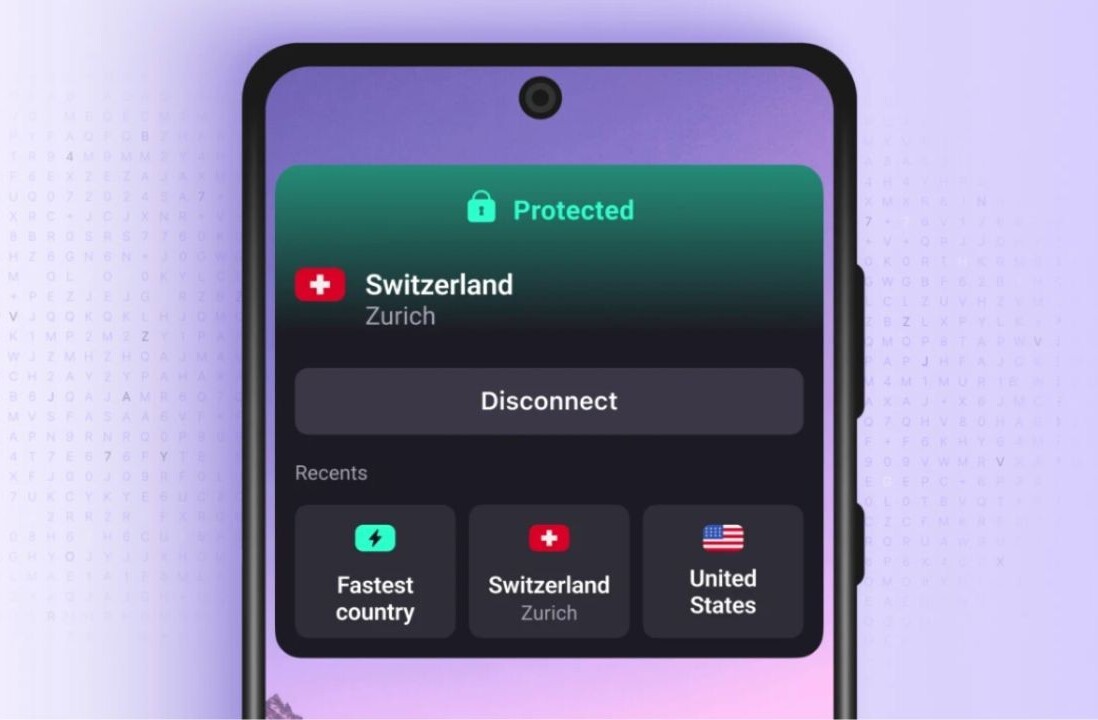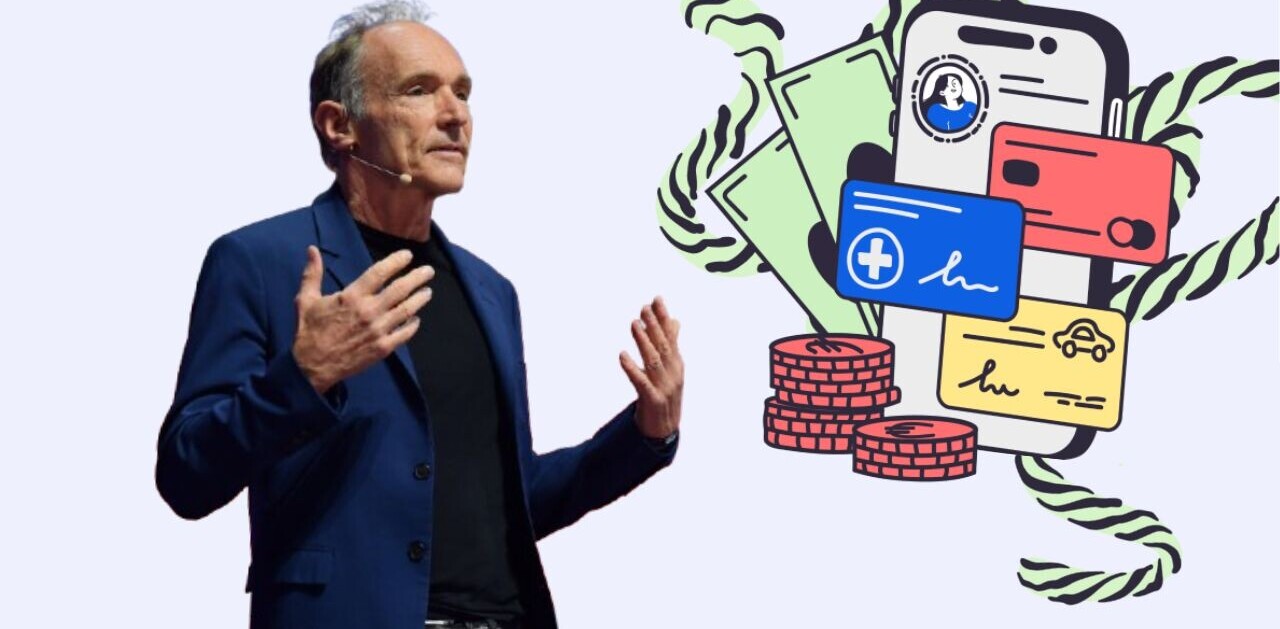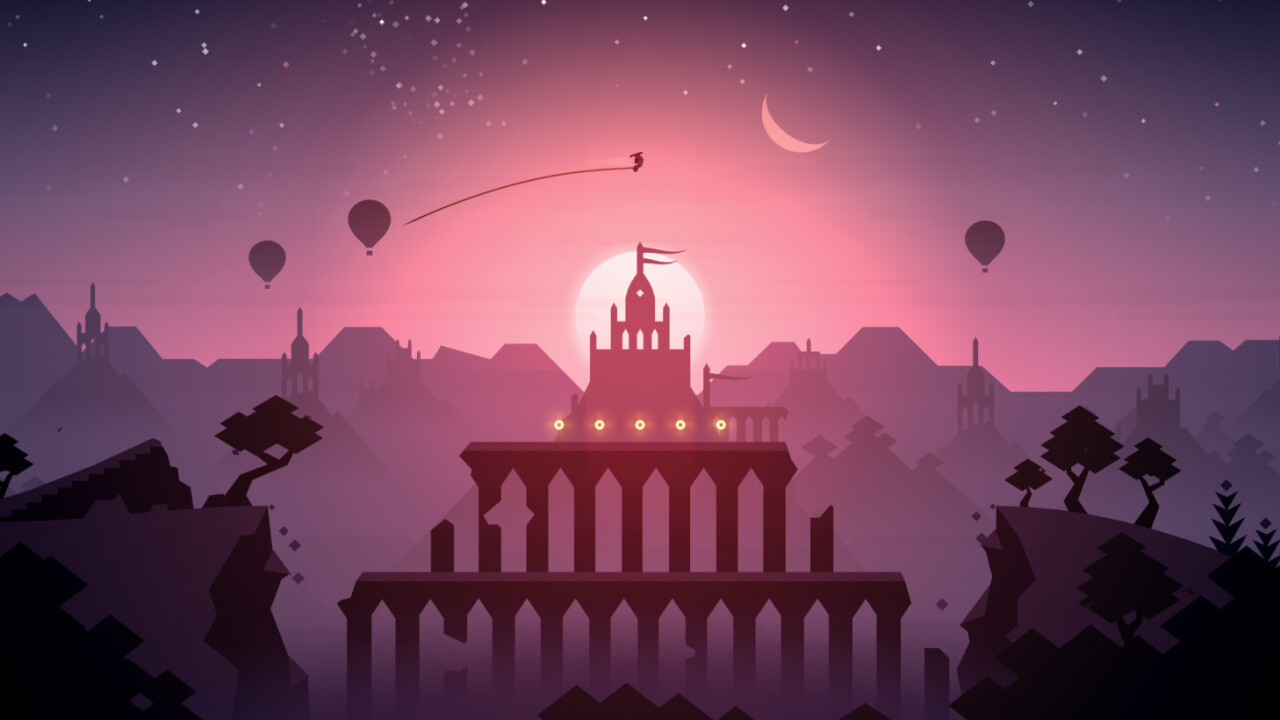
After having racked up millions of downloads across Android and iOS over the past couple of years, the mobile blockbuster title Alto’s Adventure got a sequel last month, in the form of a beautiful labor of love: Alto’s Odyssey.
Created by Team Alto – a collaboration between UK-based artist Harry Nesbitt and Toronto, Canada-based studio Snowman – the iOS title has received rave reviews and is topping the App Store charts across the globe.
While Alto’s Adventure saw the protagonist shepherd llamas as he snowboarded across mountain ranges to lilting tunes, the sequel has him and his friends sandboarding through the desert, discovering hidden temple cities and other mysteries. The gameplay feels instantly familiar to fans of the first title, while adding in new elements like wall-riding, bouncing on hot air balloons, and keeping lemurs at bay.
In bringing the simple fluid physics-based mechanics of their original zen-like endless runner to a whole new environ, the creators have pulled off the difficult task of following up their monumental debut. I got a chance to speak with Harry Nesbitt, lead artist and programmer, as well as Ryan Cash, founder and CEO at Snowman, and Eli Cymet, lead producer at the studio, to learn about how they nailed their sophomore effort.
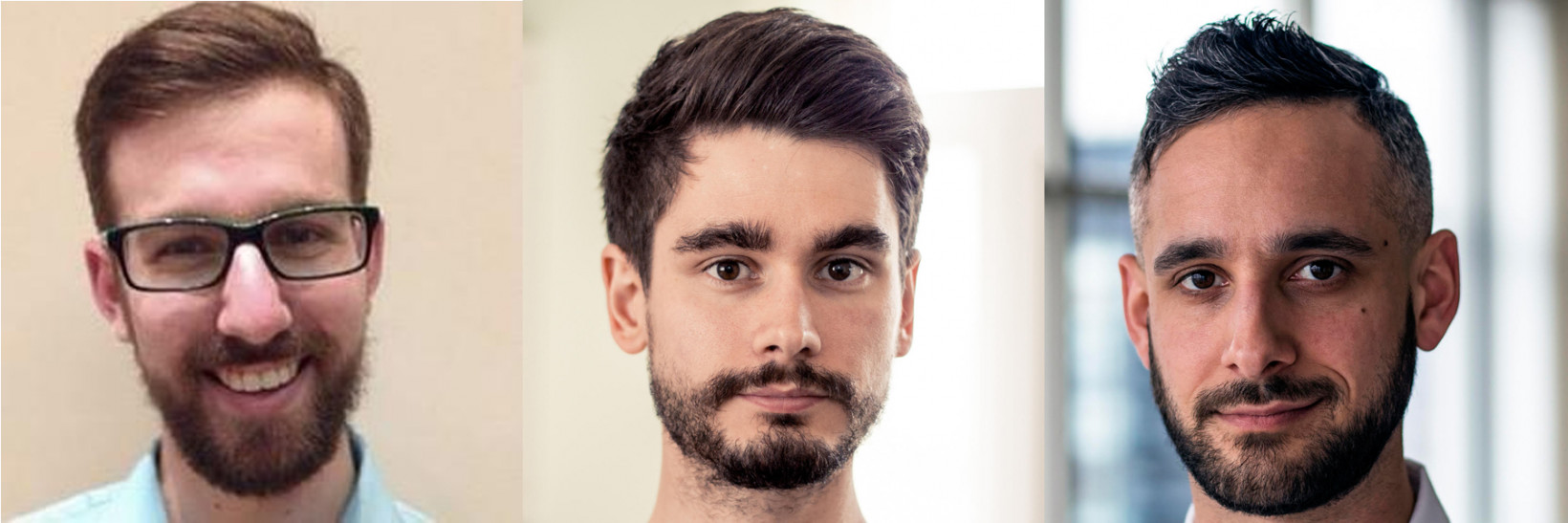
TNW: It’s been a couple of weeks since Alto’s Odyssey went on sale on the App Store. How’s that been for you, and what’s the response like so far?
Ryan Cash, founder and CEO at Snowman: It’s been like a whirlwind, really, and we’re happy with how the launch went. It was a bit different from when we launched Alto’s Adventure back in 2015, as that title was only available in English, French, Italian, German and Spanish initially; we added support for several more languages over the course of the past three years. With Alto’s Odyssey, we went live with all those languages on day one.
The US has been the biggest market for us this time around too, but now, Asia is huge as well. We made it to #9 on China’s paid apps list (in the App Store), and we hit #1 in India. I’d say that iOS device ownership and greater language support have both contributed to these differences in launch figures between the two games.
Following the massive initial success of Alto’s Adventure, the team released a major update that added a Zen Mode to the title in 2016, which removed obstacles to create a more relaxing experience for players who simply wanted to drift off into the game world. It was around that time that Cymet moved his family from Vancouver to Toronto to work more closely with the team at Snowman, and he said that the ordeal helped “give me a sense of groundedness in this emotion we’ve tried to capture with the game, of going outside your comfort zone and putting yourself somewhere completely new that’s beautiful and interesting, and trying to find the beauty there.”
What was it like bringing the sequel to Alto’s Adventure to life over the past year and a half?
Eli Cymet, lead producer: It’s an ongoing process even now. The starting point needed to be a feeling that we wanted to capture. For us as a development team, it’s important that everything in the Alto universe brings players into a space that feels transportive, like they’re a little far from home, and maybe someplace magical – and that while they’re there, we stir a little bit of emotion in them.
The first step was for us to realize that Alto’s Adventure was a finished product. We decided at some point in late 2016, that if we were to continue with the series, we needed to stop tinkering with the current game. It was more difficult a decision to make than you might imagine.
Once we got past that, we began outlining what this project would be like, and how many team members we’d need to pull it off beyond just Harry. That’s how we ended up finding BAFTA-nominated programmer Joe Grainger based in the UK, who’s been unbelievable as a team member. Once we got the band together, it was about getting our infrastructure and our Slack channels set up so we could get down to work.
This time around, we had more people on the Snowman team to bounce ideas off of. We started this process shortly after Game Developers Conference in 2017 with an Alto jam, where we let our hair down a bit to see what sort of new ideas, mechanics and concepts we could come up with. A lot of that ended up on the cutting room floor, but from that, we found the core shape of Alto’s Odyssey, and the rest really was about building it out, keeping everyone on track and feeling supported as we inched towards completing the project.
Harry Nesbitt, lead artist and programmer: We stripped back everything from the game, and tried to find alternative features and mechanics that would stand on their own. With this new game, we were sure that we didn’t want to simply re-skin existing assets. We wanted to challenge ourselves to find stuff that has its own value, and I think that was a really important step in the process. That helped make us more conscious of what we are bringing back from the first game, and what we’re adding, so we could strike a balance between them.
What were some of the ideas behind the new desert environment in Alto’s Odyssey?
Harry Nesbitt: Before the first game came out, we were talking about what it’d be like to have an Alto game set in the desert; it’d be sort of an antithetical setting where you could explore a different set of feelings and environments, and potentially mechanics that came from those. So it was an idea that felt very pure and logical.
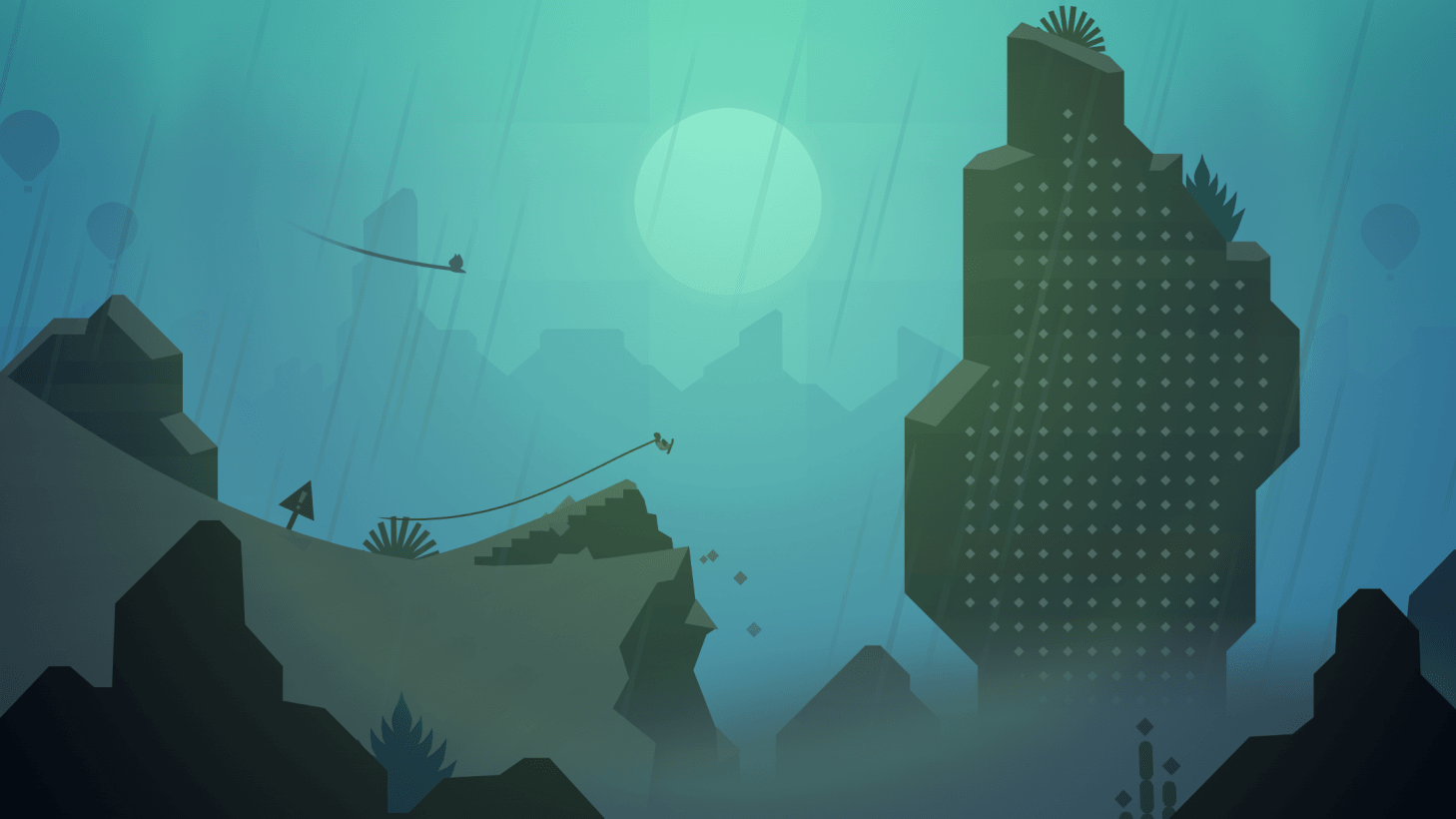
As Eli mentioned, it wasn’t just about changing the colors for the second game, it was more like, ‘let’s find this new space and explore everything it has to offer, and really try and be true to the feeling of stepping out of the familiar space from the first game,’ while also feeling connected between the spaces so they’re from the same world. At the same time, there’s a whole different range of tones and themes that you can explore in Alto’s Odyssey.
Many players I’ve spoken with, and other veterans like blogger Jason Kottke, have reported that the original game is therapeutic, meditative, and has helped them get through hard times. Is that now ensconced into the Alto DNA at this point?
Harry Nesbitt: I think so. When we were designing the original, there was an effort to reduce the visual complexity and create a game that was viscerally enjoyable to play.
We were inspired by a lot of other endless runners, but it felt like a lot of them were trying to overwhelm players in trying to create an exciting experience. A lot of folks loved that, and so did we to an extent. But we wanted to try going in a different direction, and so that led us to create a minimal experience.
Players were getting in touch to tell us this was great for relieving stress and coping with anxiety, and we had no idea that the game would have such a profound effect on them. So when we looked at this feedback, we said, how can we respond to this and consciously add a new game mode that takes this further? Can we remove all the extraneous meta-game stuff – goals, points, tricks, and fail states? And so we came up with Zen mode. It was well received, and that was validation of the idea that there’s value in taking things out than adding things in needlessly.
It was an eye-opening moment (after that update): having a little restraint can go a long way, and we’ve kept that in mind for this effort.
How did you go about producing the music for this sequel?
Eli Cymet: Brian Crawford did a phenomenal job with the score on the last one. This time around, with the growth of the Snowman team and being able to have more people who worked in the same place and time zone, we were fortunate to be able to get Todd Baker on board. He’s the audio designer and composer who worked on Tearaway and Monument Valley 2. For Alto’s Odyssey, we focused on elevating the soundscape and music of the game in ways that complemented the expanded world for Alto and his friends, and we were looking for creative ways to go about that.
That involved things like mirroring the game’s procedural generation with a soundtrack that wasn’t set in a standard time signature. So while the ear may detect this beautiful musicality to the score, you never really memorize it in a way that you’d know what’s coming around the bend.
Players constantly tell us about how they enjoy the way the music reacts to changes in the game. A little secret I can let you in on is that that’s not really happening. Todd just created such a dynamic and unpredictable score, along with working on changing up the way the music brings you into and out of the levels, that it never feels repetitive, but instead feels responsive.
We worked with Baker on the core soundscape, sound effects and the main theme; for the Zen Mode in this game, we brought back Torin Borrowdale, a film and TV composer based in LA, whose sound suited this part of Alto’s Odyssey.
As a team, do you feel that you’d like to further explore this realm of calming games?
Eli Cymet: As part of Team Alto, I love this idea that play on mobile devices has opened up gaming and play to a wider audience of people that don’t traditionally think of themselves as gamers or as people who’d invest in a gaming system.
I truly believe there’s something profound and personal in making play experiences for these devices that sit in your pocket all the time, that you’re deeply connected to. I’m very proud of the fact that we at Team Alto and at Snowman come from non-game-development backgrounds: we’re writers, illustrators, designers and marketers. I think these backgrounds lend themselves to appreciating the value in play that isn’t strictly expertise- or competence-driven. And I think there’s something really wonderful about making something that could be someone’s therapeutic and fun experience, or someone else’s first gaming experience.
We’re already receiving mail with photos of children getting their first taste of gaming with the Alto titles. As far as I’m concerned, I’ll always push for games that are accessible, offer people a window into a magical place for some amount of time, and not dependent on their skill. And I think there’ll be a small, if not constantly growing audience for that kind of thing.
Ryan Cash: Jordan Rosenberg (co-founder at Snowman) and I accidentally fell into making games. We grew up playing video games, but both of us stopped playing around our late teens. At the time, the world was a different place; saying that you want to make games was as crazy as saying you wanted to make it to the NBA. Of course, a lot has changed since then, and both the gaming market and industry are a lot bigger now, and it eventually made sense for us to enter this business.
For us at Snowman, we’re keen on working on things that are artistically fulfilling. An unspoken mantra we have at the company is that anything we work on here, we should be able to print a screenshot of it and have people enjoy it as art.
What’s next for the Alto universe?
Eli Cymet: There’s a part of me that doesn’t actually believe that this game is really out. That’s perhaps a roundabout way of saying that we aren’t thinking way ahead just yet. We’re keen to release the Android version over the next few months.
We’re also focused on making the Alto’s Odyssey experience as polished as possible, so fixes and patches are the order of the day for now. We all feel that the Alto characters are a group of friends that we’ve gotten to know over time. We feel responsible as good stewards of that universe, and we’re always going to have this itch to tell stories from there. As those stories become compelling enough to us that we can no longer wait to share them, we’ll get to telling those stories as best as we can.
The Next Web’s 2018 conference is just a few months away, and it’ll be ??. Find out all about our tracks here.
Get the TNW newsletter
Get the most important tech news in your inbox each week.

